Take a look at my mid-stake zoom chart.
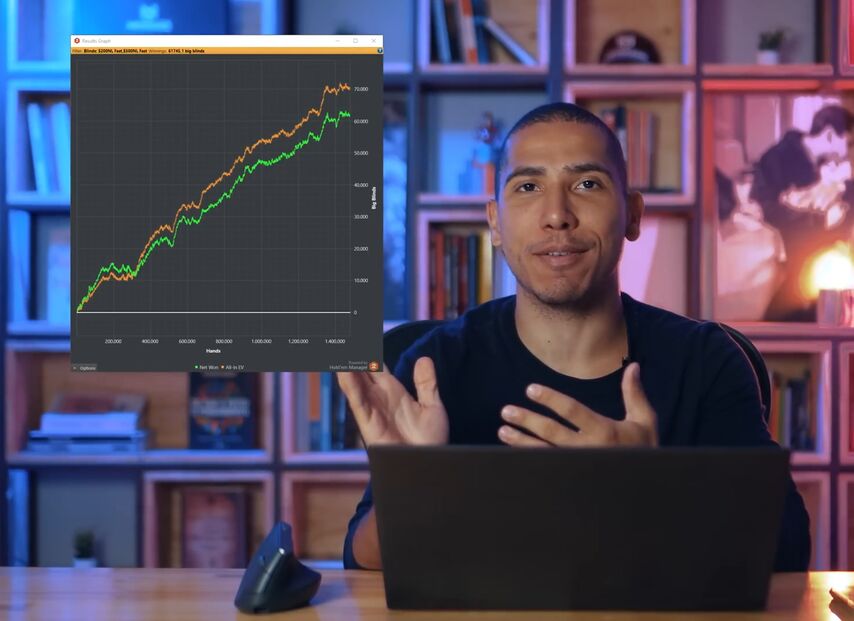
Isn't he wonderful? 1,475,000 hands with a win rate of 4.77bb/100! $195,000 in profit!
In this video, I'm going to give you three game improvement tips that will help you increase your win rate, whether you're playing Zoom or reg-tables. And in general, these, in my opinion, will fit any poker format.
My first universal advice is to develop mental resilience. Many regulars do not pay due attention to this, primarily dealing with the technical side of the game. What do I mean? Tilt when we don't do well; self-confidence when it goes well; the desire to assert ourselves by fighting with other regs; the desire to be aggressive at all costs – all this kills our win rate.
Fortunately, I was lucky – I am naturally very psychologically stable. The fact that I almost never tilt, don't get into battles with regulars, and rarely give away money at the tables gives me a serious edge over other pros in the long run. I see people all the time making crazy call downs or ridiculous bluffs that go against their strategy because they get emotionally swayed. Therefore, training your psychological stability, executeing your strategy as stable as possible, and getting rid of gross mistakes alone will give you a huge plus.
I know it's easier said than done. The knowledge of the theory partly helps in eliminating blunders. When I knew for sure that the line should be this or that, what I really wanted to do when emotional, was condemned by theory. This helped me to restrain myself. Extensive theoretical background develops poker intuition, which helps to distinguish a good game from a bad one. Among other ways to solve this problem, I can play shorter sessions, meditation, warm up before the start of the game – in general, everything that you probably know about without me. Anything that will allow you to play more consistently and not lose focus throughout the session will come in handy.
In general, do not forget about the importance of psychological stability. It is possible that only an insufficiently stable psyche does not allow you to achieve the desired success at the tables.
My second piece of advice is to apply pressure in unexpected situations. This is one of the features of my game, something that I'm pretty good at. It allows me to extract additional EV in situations where most people are content with little. To illustrate, I'll give you some examples of hands that I hope will inspire you to look for similar situations in your games.
I selected four examples from zoom 500.
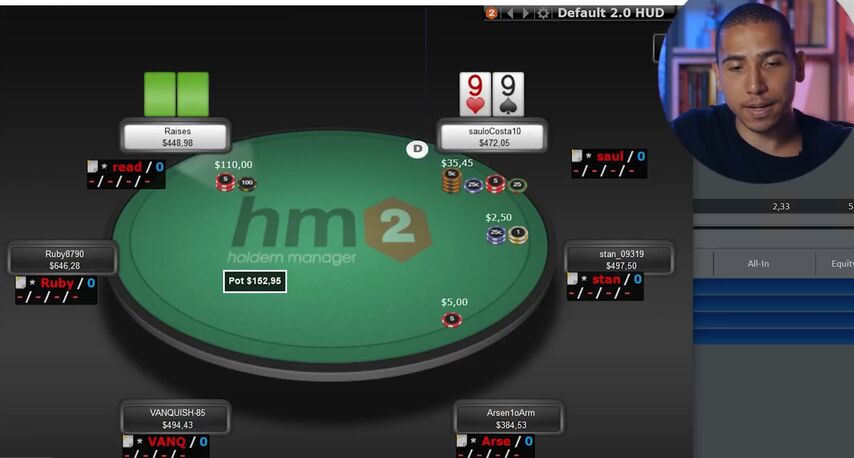
I make a standard 3-bet against a reg from the cutoff, he comes back with a 4-bet. In these positions with nines, you should call.
Flop ($227):
He bets $56. I have a 9 of spades so I feel like I can float against this size. I think without a spade my hand should fold.
Turn ($339):
He checks, and I check next.
River ($339):
Opponent blocks bet.
In this situation, you will often encounter aggression. 4-bet pot, paired board, flush on the river... We're at a disadvantage, so we're not expected to counter aggression and often bluff.
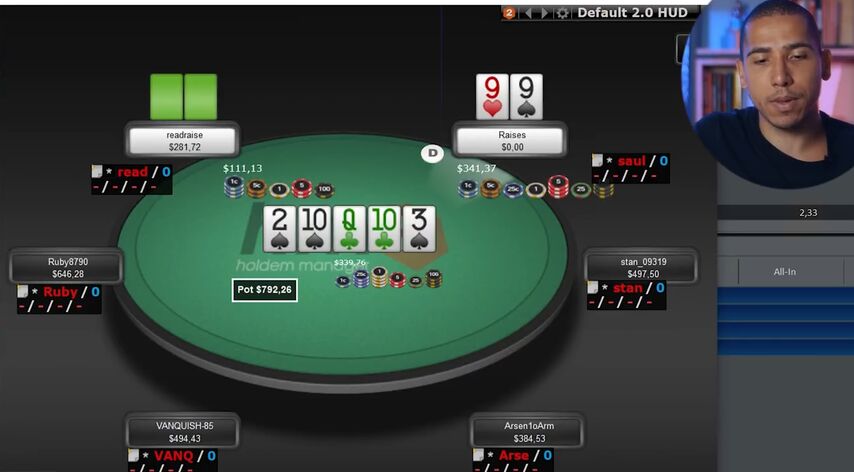
I went all in attacking hands like , , . There are some slow-played trips in my range, first of all, , as well as a lot of flushes – , , and others. In general, I have enough value hands, but at the same time, the opponent does not expect frequent bluffs from me, so he will tend to overfold with bluff catchers.
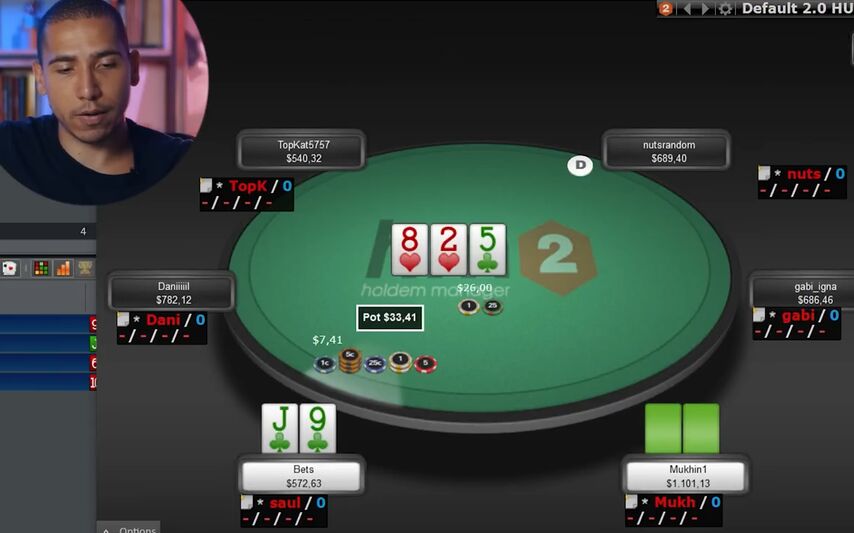
I raised preflop from UTG, and I bet a small continuation bet on the flop. The big blind calls.
Turn ($41):
When I get a flush draw with a gutshot, I bet a second barrel of $26 after my opponent checks. He check raises to $138, a fairly large sizing – slightly larger than the full pot. Naked flush draws in this situation become indifferent, but with a gutshot, calling seems mandatory to me. I call.
River ($318):
The opponent, as in the previous example, puts out a block bet. His range is saturated with medium strength hands – 43s, 74s, 97s. Of the monsters he will have and . There are few flushes because he wouldn't check-raise a naked flush draw on the turn, and possible combo draws are partially blocked by a six on the river.
As for me, it's pretty hard to give me enough bluffs. In addition to club flush draws with a seven or a nine, full houses, flushes, and some overpairs remained in my range.
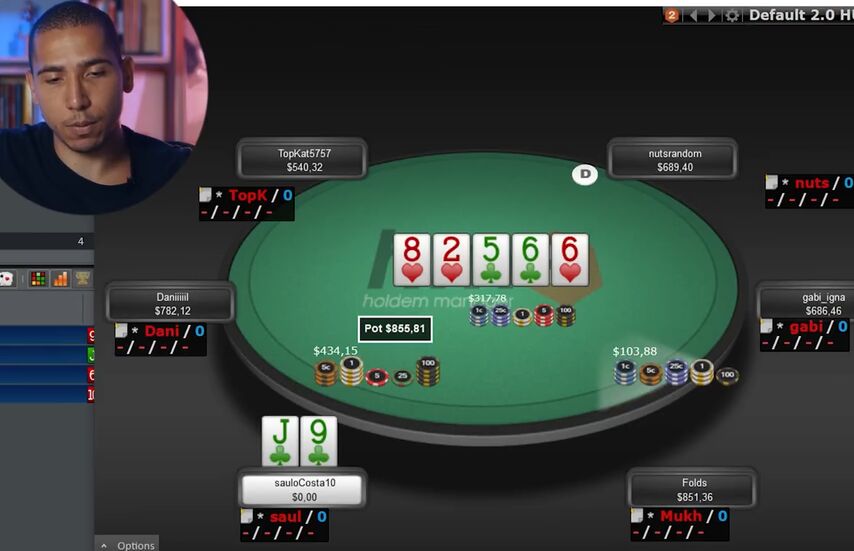
I go all-in and he gives up.
I'm pretty sure people won't call their straights enough, and they won't remember to add some full houses to the block bet often enough. I really like this bluff.
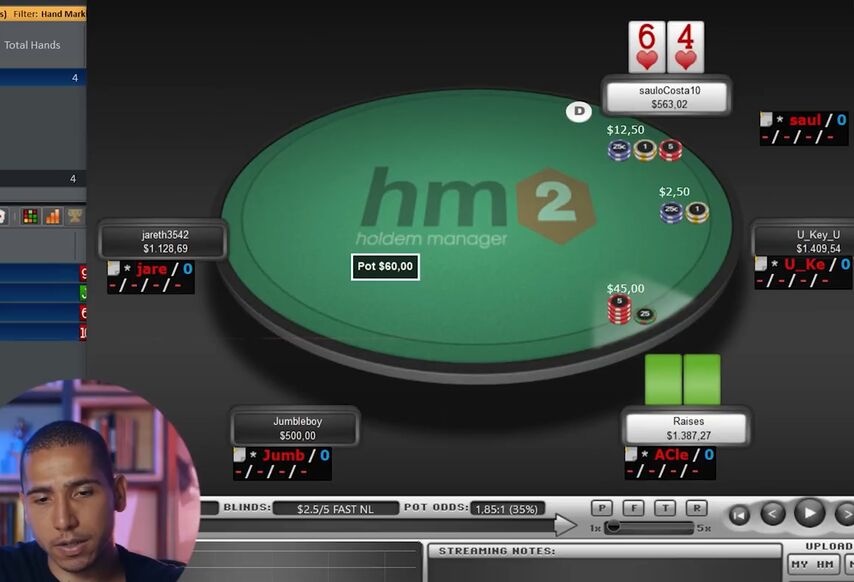
I open 64s from the button, I get a rather small 3-bet from the big blind. Against this size, I decide to call, against a larger one I can find folds.
Flop ($92):
Opponent bets $50. With a pair, of course, I call.
Turn ($192):
He checks, and I check next.
River ($192):
My opponent bets just over half the pot, $106. You can already see what these hands have in common: on the river, opponents use small and medium sizings, which usually indicates medium strength hands that are afraid of aggression. So we not only show strength where it is not expected of us, but also attack the weak part of the range.
What can I bluff with here? For example, , that's a good option. For value, I have , , , slow-played flushes... Lots of value, few natural bluffs.
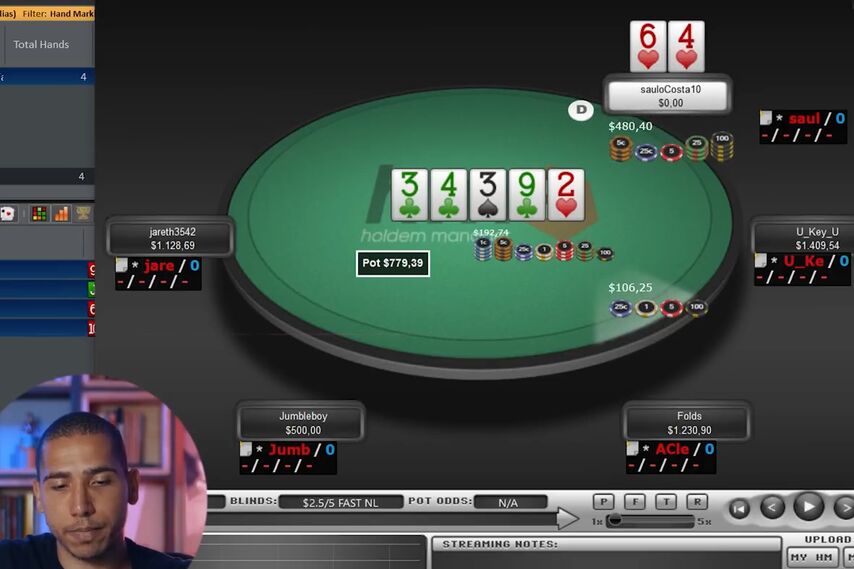
I go all in and see a fold. I think in his spot you can confidently bet-fold hands like , , .
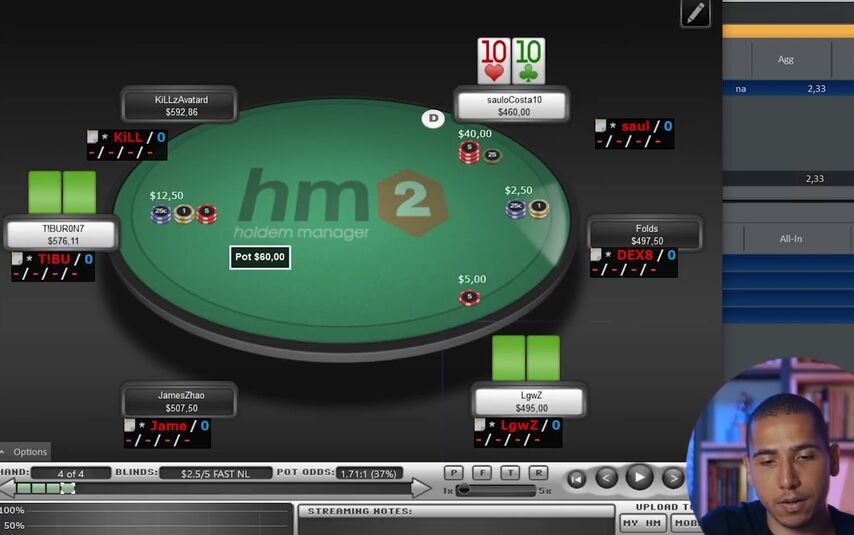
In the last example, I have two tens. I 3-bet against a reg and he calls.
Flop ($98):
I bet $54 on the check. During the analysis, the choice of sizing seemed strange to me, but in the software, I saw that a strategy with two sizings is also possible. Although today on boards with an ace and another broadway card, I prefer a very small sizing, something like 15% of the pot with all hands.
The opponent calls.
Turn ($196):
We both check.
River ($196):
It's very cool to have two tens here since I'm blocking – a very likely hand in Villain's range. He bets half the pot, $96. And I, of course, go all-in.
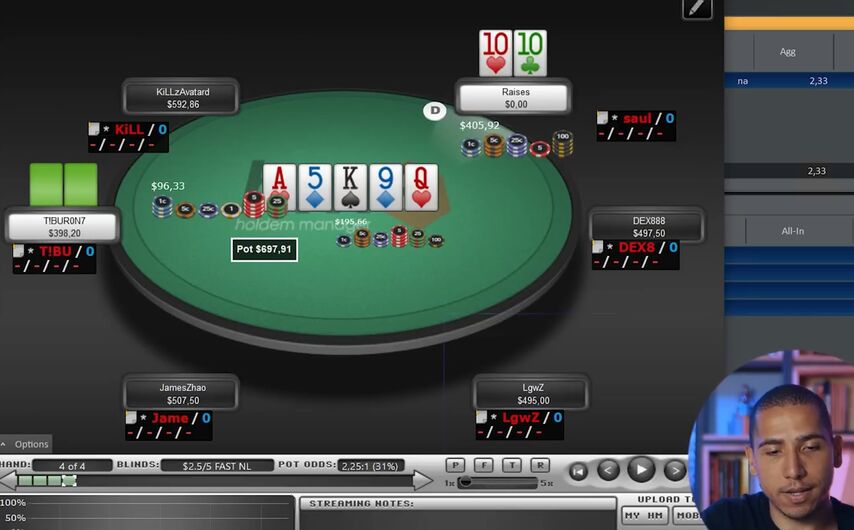
He folds.
In theory, this may not be the best bluff. A queen blocker looks more appropriate as my opponent's most obvious bet call is . So the best bluffs for me are and . Nevertheless, I got it through and have no regrets.
I hope these hands have helped you understand what I mean by applying pressure in unexpected situations. Show aggression where you are not expected to bluff often or have a strong desire to fight for the pot, so they will usually overfold.
The last and most important tip is to exploit recreational players! I don't know why so many professionals forget about it. They don't study the game against amateurs separately. 99.9% of their time is spent on learning the GTO strategy, and the last 0.1% they dedicate to analyzing the strategy of some regular. It turns out that all the work on the game comes down to confrontations with the regulars. However, most of our winnings come from amateurs! By spending a little time studying their game, we get a lot more in return. This is an incredibly important, even a key element of mastery for any format, be it cash or MTT.
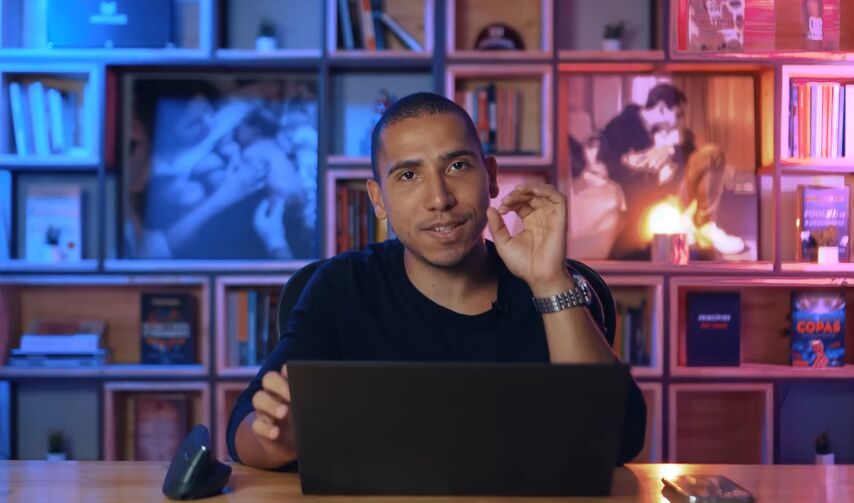
In this video, I will give some examples of how I exploit amateurs. I look for opportunities to move away from GTO on all streets, from preflop to river, and always try to choose the most brazen exploits. This means that I only think about how best to play my particular hand. Most likely my opponent won't be able to figure out what I'm doing wrong, or won't be able to find a counter, and most of the time we'll just never be at the same table again – many amateurs only show up for a few hands, especially at the low and medium stakes. Therefore, I always choose the line with the maximum expectation for my hand.
I especially enjoy adjusting to the river bets from amateurs. What I'm about to say may surprise you, but their river betting ranges are almost always loaded with bluffs. This is against conventional wisdom, and when I started, I was warned against light call downs against the fish because they don't bluff often enough. However, this is not really the case! If you don't believe me, watch a few hands and you might be tempted to fold a little less often. I highly recommend calling amateurs lighter than professionals, and I assure you, you will not regret it.
I've selected four hands that illustrate one line I particularly love: we 3-bet and c-bet, and our opponent in position raises and barrels on the following streets after our call. We are crushed by aggression, and we stubbornly go to the showdown! Intuitively, you might think that amateurs don't bluff like that. However, I have been carefully studying the trends of the field for the past six years and assure you that this is the most reliable option for wide call downs of all possible. Let's get a look!
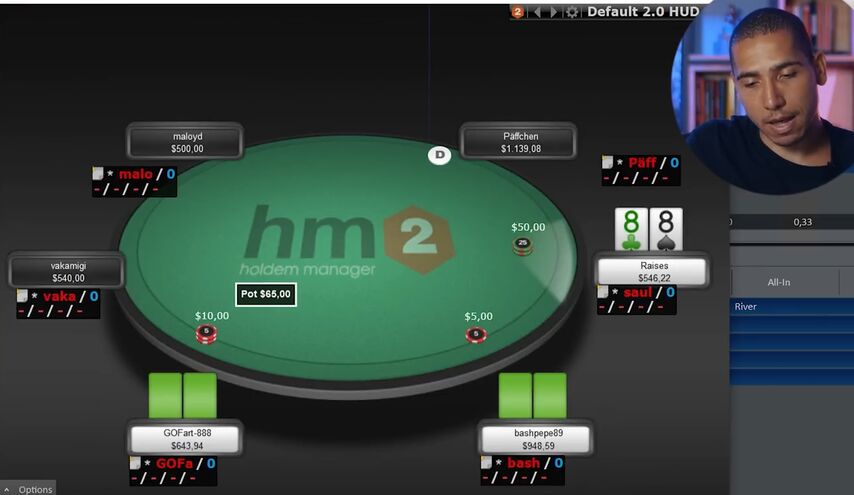
I 3-bet with eights against an amateur who opens in first position. He calls.
Flop ($105):
I make a small continuation bet to $30, this is a good and correct play. Villain comes with a min-raise to $61 – quite ridiculous, but they like to click it back in all sorts of situations. I call with the intention of not folding on most runouts.
Turn ($227):
I check and call a $110 bet.
River ($447):
Scary card? Not for me. Amateurs do not use linear ranges. All their lines are filled with random cards. So when he puts me all-in, I'm not afraid of possible flushes – I know that there will always be enough garbage to make my play profitable.
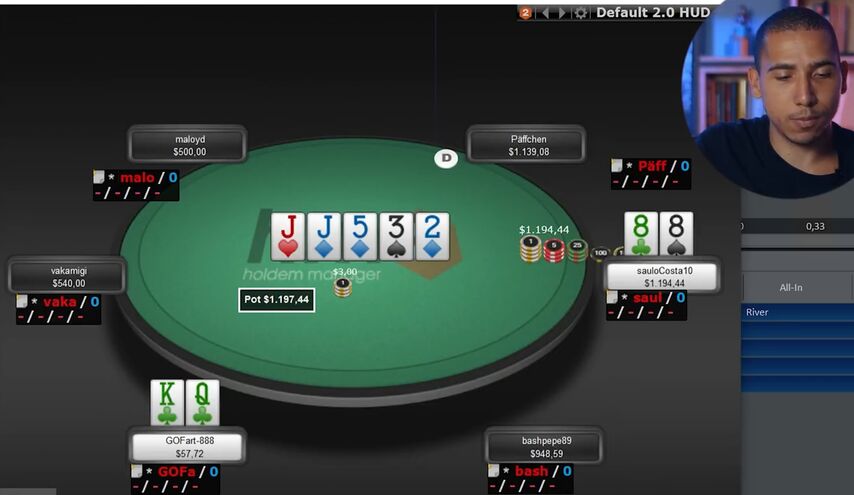
The next hand was played at 200 zoom.
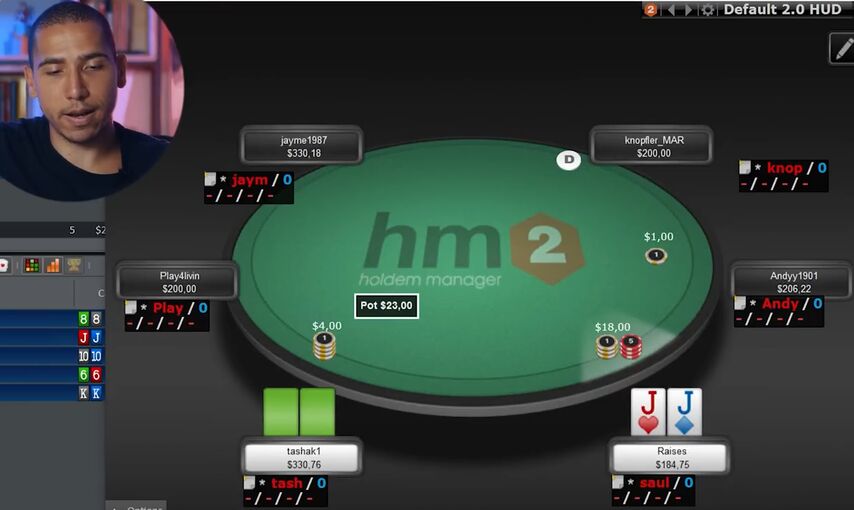
I make a standard 3-bet with jacks and get called.
Flop ($37):
I make a small continuation bet of $10 and my opponent raises to $23. A small raise immediately makes me think of a mandatory call down.
Turn ($83):
I check and call $36.
River ($155):
Don't be afraid of overcards. I check and call $104.
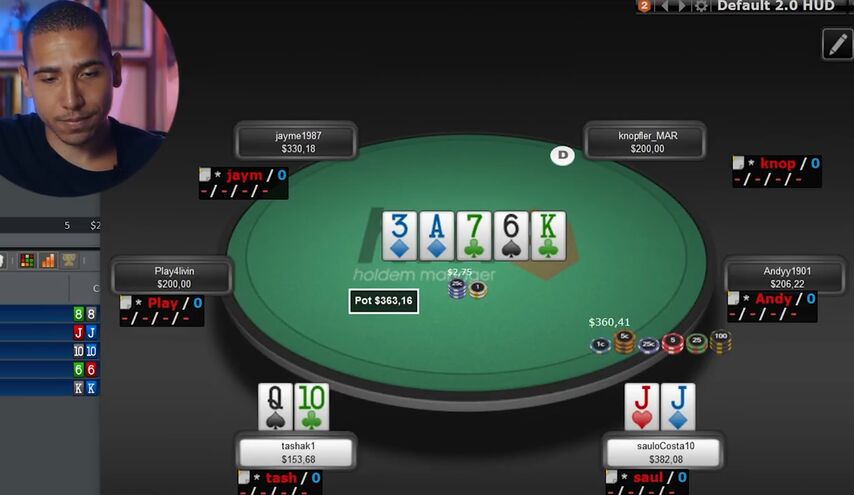
Queen-ten offsuit!!
Many regulars, when playing against amateurs, make the same mistake – they try to give them a more or less reasonable range. However, this is useless. You will be shown hands that should not be in any reasonable range, which will not even come to mind. This guy had QTo in the 3-bet raise-call and c-bet raise. Who knows what other hands will be in his range along this line? , ? By trying to give amateurs a logical range and find folds against them, you are giving up a lot of money.
On the next hand, I limp in first position with two tens. I will not go into details of when and why I do this. If you want, I can talk about it in a separate video in the future. The amateur is on the button in this hand and he raises, after which I limp-reraise.
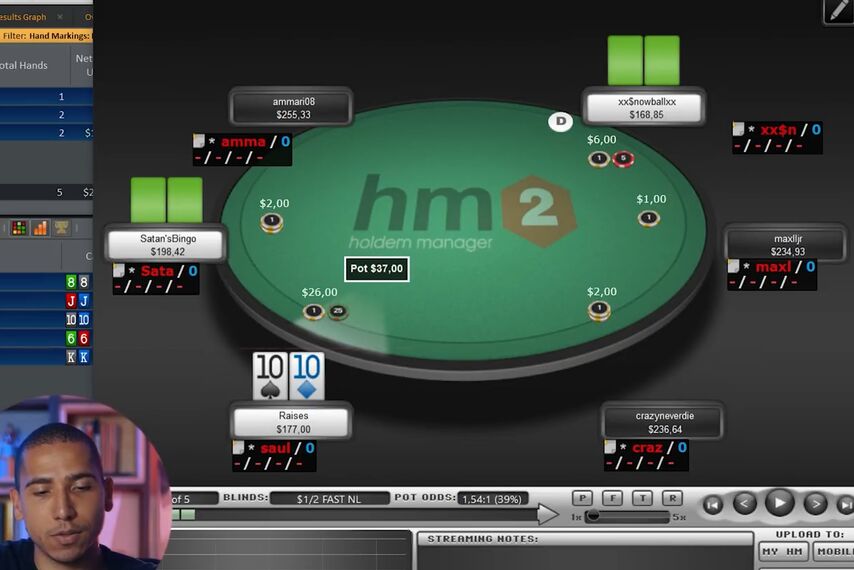
He calls, and we see the flop together.
Flop ($57):
I bet $14 and he makes a raise to $28. Ha ha ha, well, you get the idea.
Turn ($111):
Overcard? And I don't care. I'm already ready for the showdown.
He bets $58 and calls.
River ($226):
Oh my god, and an ace! I check, he bets all in for $64. I call.
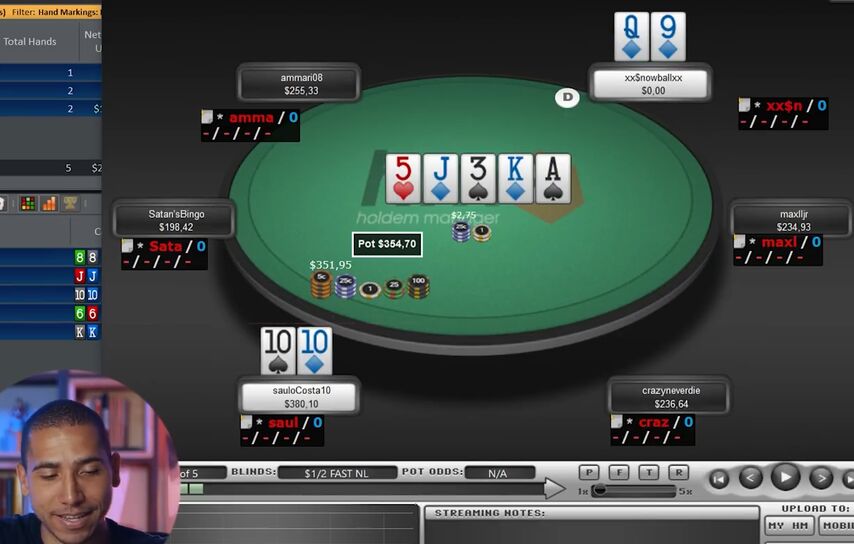
Come on!
Zoom 500 again. 3-bet against an amateur.
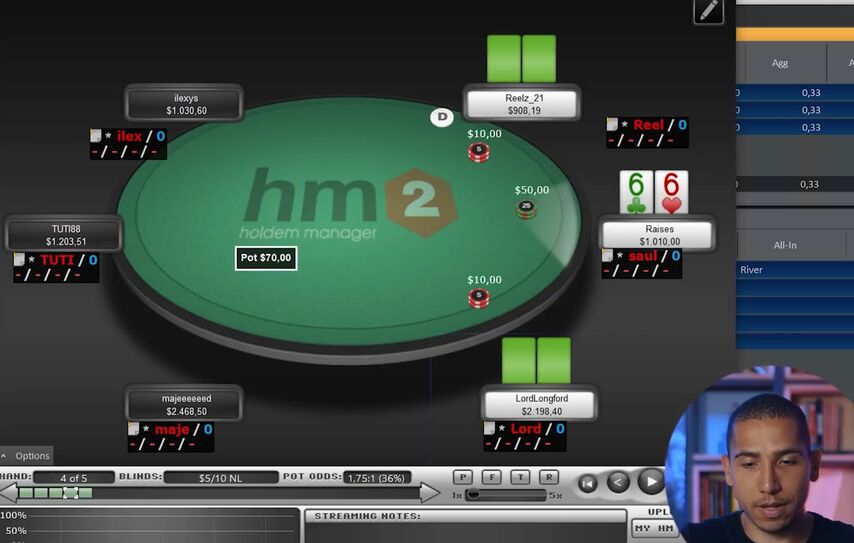
He calls.
Flop ($110):
I bet $27, and get raised to $70. I call, and don't plan on giving up.
Turn ($250):
Check-bet $135 – call.
River ($520):
I check, and he bets $515, I call.
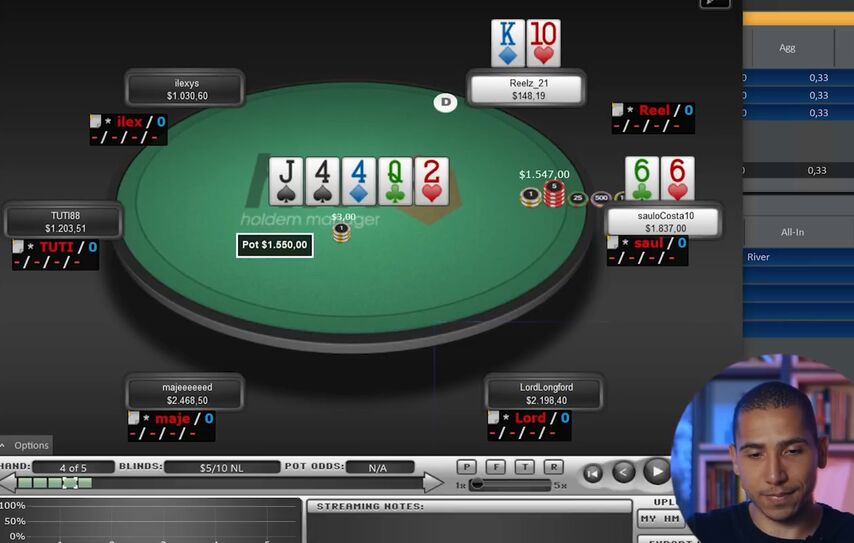
And the last one, Bodog NL1k.
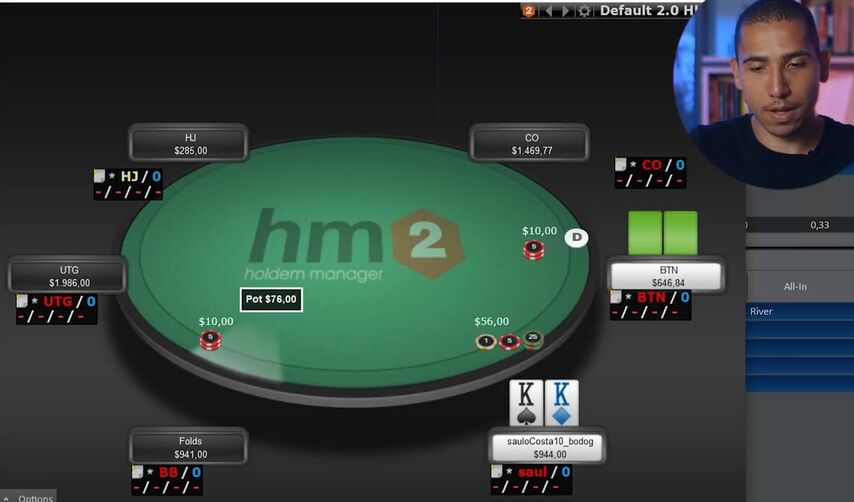
Flop ($122):
I bet a very small continuation bet, $28. He raises to $115. Barreling half the pot on the turn – amateurs love this sizing. The river he pushes.
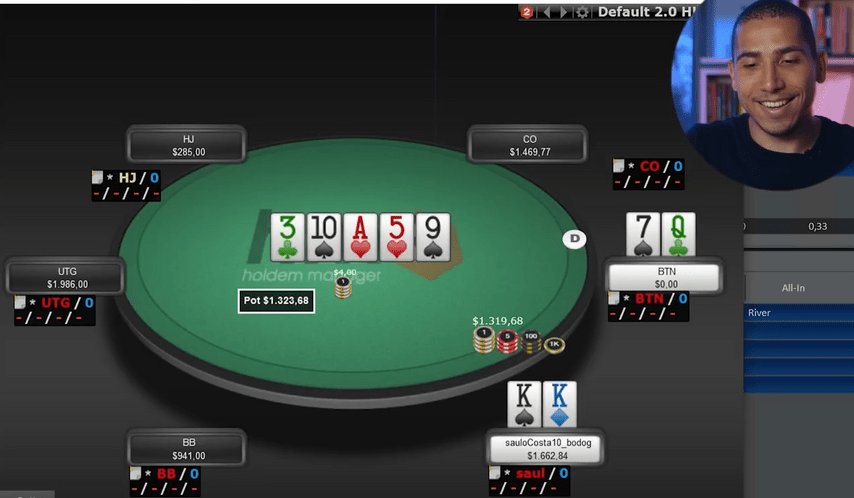
Something like this.
That is why it is not necessary to put amateurs on narrow ranges. It's NL1k and the dude is shipping a stack with Q7o. The maximum exploit against such opponents is a bold call down.











